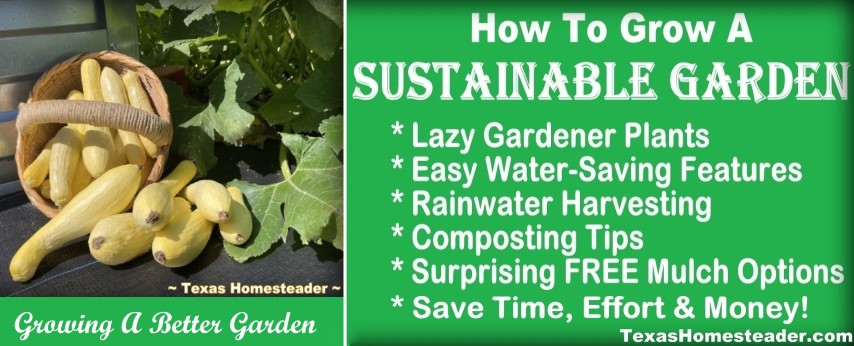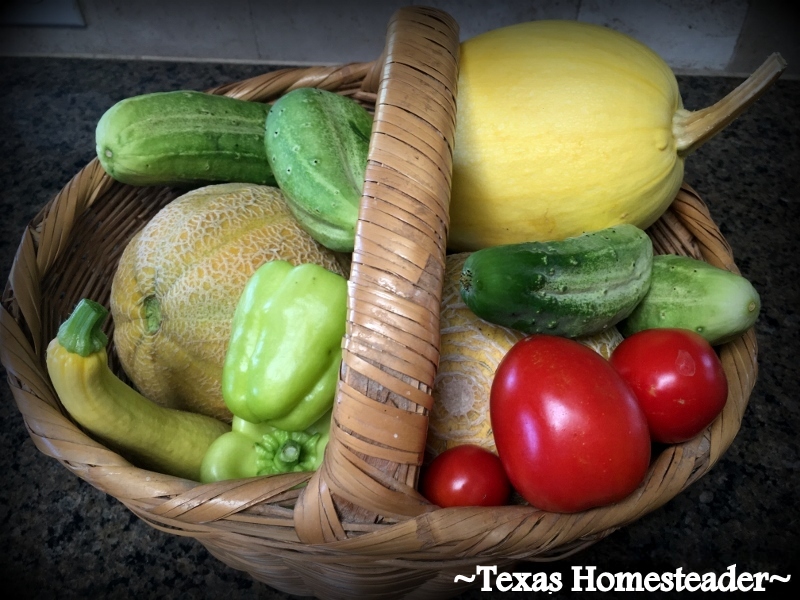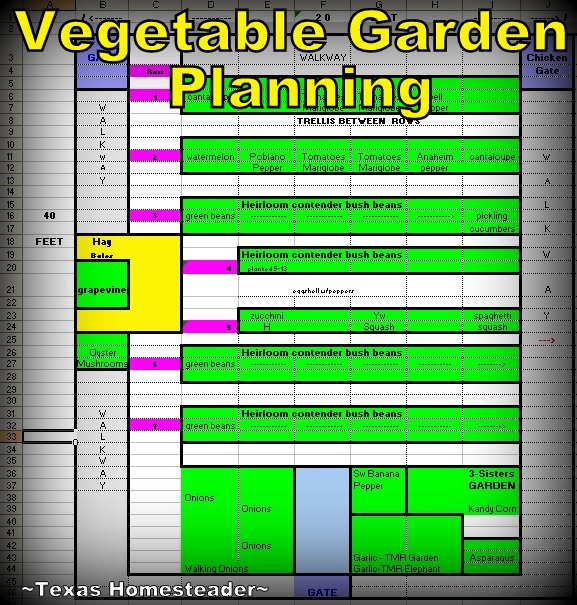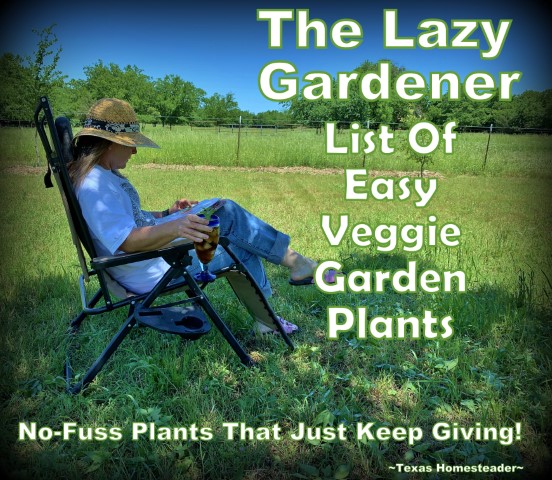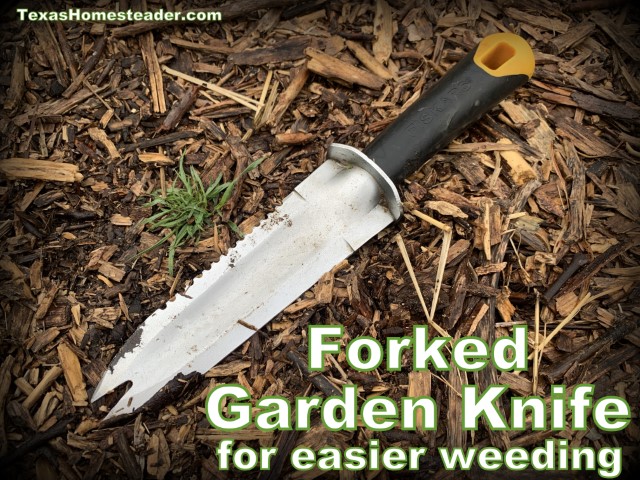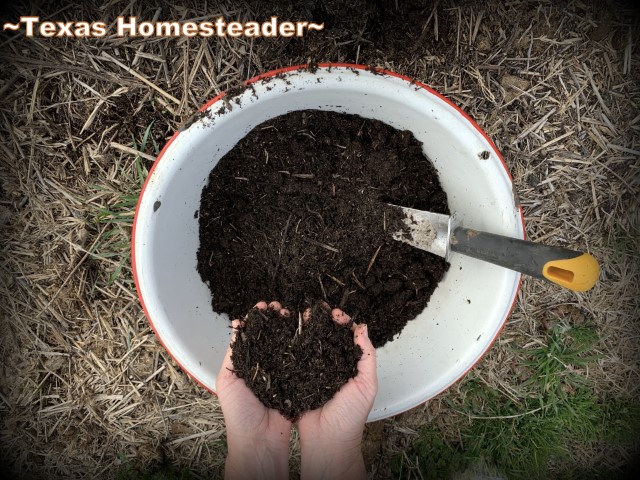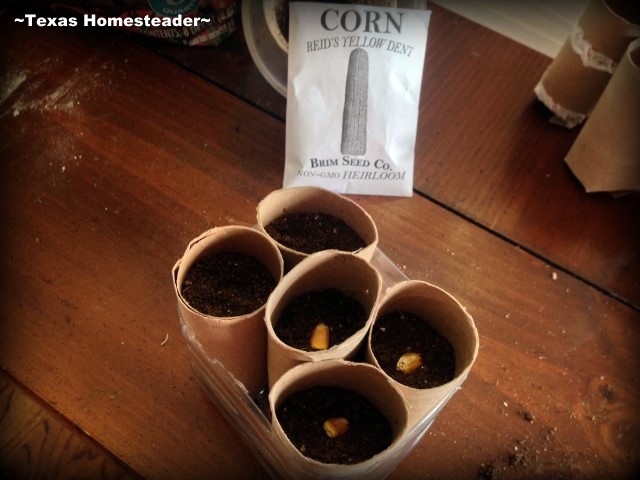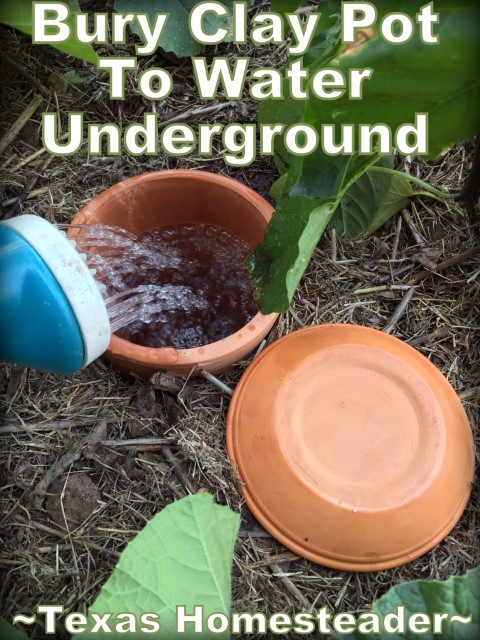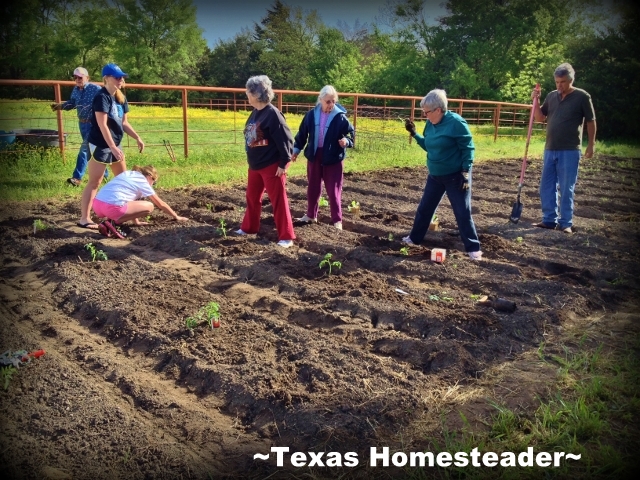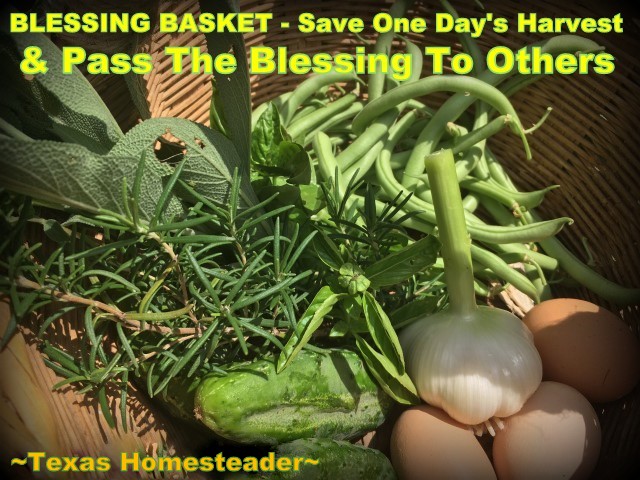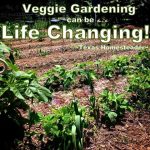by Texas Homesteader ~
A sustainable garden is both rewarding and beneficial. I’m showing easy steps and practices for making your own thriving yet eco-friendly garden space. You can create a harmonious balance with nature right in your own yard!
(Note: Some links in this post will take you to other related articles for further information. But links preceded with * are affiliate links. If you click and buy something I could receive a tiny commission.)
Benefits of a Sustainable Garden
There are many benefits of a sustainable garden:
Environmental Impact – The vegetables you’ve grown in your own garden are the most eco-conscious option. No packaging, no transportation – just healthy, fresh food.
Healthier Produce – You can assure the vegetables you enjoy from your garden have no harmful chemicals such as is often used in conventional farming.
Money Savings – After the cost of setting up your garden, you can enjoy lots of healthy food for the cost of a tiny portion of a packet of seeds!
Planning Your Sustainable Garden
Here are a few considerations when planning your sustainable garden:
Planning Garden Plants. First decide what you want to plant:
-
- Make a rough sketch on paper
- *Buy a Garden Planner to make things easy.
- Or make your own Garden Planting Plan Spreadsheet.
In-Ground, Raised Bed or Both? Decide whether you want in-ground rows or *Raised Beds. (I use both in my garden, see my post about How & Why To Use Raised Beds In Your Garden)
Container Garden. If you don’t have room for a traditional garden, consider *Container Gardening or even *Grow Bags.
Prepare Your Garden. I share an easy Checklist For Getting A Garden Started.
Features In A Sustainable Garden
Choosing the Right Plants – Choose plants that grow best in your area. And don’t forget this Lazy Gardener Plant List of foods you plant once and enjoy for years!
Natural Pest Control – I don’t like to use chemical poisons, insecticides or herbicides in my garden. So my first line of defense against pests are:
- Prevention First – Start with prevention by pulling out weak plants, building healthy soil & minimizing harmful insect habitats by clearing your garden of insect breeding places & cleaning debris and weeds.
Gentler Ways Of Dealing With Insect Pests – Instead of using poisons when insects make their way into your garden. Here are some gentler ways to deal with insect pests:
Soapy Water Insect Control – When you must deal with soft-bodied pests such as aphids, thrips & mites you can use sprays of oil/soapy water. The University of California Ag & Natural Resources recommends 2.5 tablespoons dish liquid mixed with 2.5 tablespoons vegetable oil in 1 gallon of water sprayed on pests. (Only below 90 degrees to keep from burning plants).
Diatomaceous Earth – Diatomaceous Earth (aka DE) is simply ground phytoplankton fossils. The sharp edges compromises the protective exoskeleton of insects who then die. But remember it’s non-discriminatory and can harm even beneficial insects so you want to use it sparingly. You can see more Information on Using DE from The Farmer’s Almanac Here.
Neem Oil – Acts as both pesticide as well as fungicide and is an alternative that helps control tomato hornworms, aphids, whiteflies and more.
Patience – Sometimes it’s best to wait just a bit to allow Mother Nature to step in. One year I cringed over the aphids on my tomato plants. Then I saw the dreaded tomato hornworm. But I knew in eating leaves the hornworms would also consume the aphids until their numbers were lowered to a manageable number. There’s a balance here of course, but in this case it worked for me.
Sustainable Gardening Practices
Here are easy sustainable garden practices you can implement in your own garden:
Composting – A gardener’s black gold for healthy soil and plants. You can Read About How To Compost Here
Rainwater Harvesting – We have 3 Different Rainwater Collection Systems we use here on the Homestead. I collect & use pure rainwater for 100% of my outside watering.
Mulching – This is an important step for a healthy garden, especially where summer temperatures are very hot & dry. My 3 favorite mulch options are:
- Cheap (or FREE) Wood Mulch For The Garden
- Using Vining Plants For Living Mulch – it’s mulch that FEEDS you!
- Using Leaves To Benefit Your Garden.
Companion Planting – The University of Minnesota has a great resource for how companion planting can save space in your garden, increase soil health, repel pests and attract pest’s predators.
Making Healthy Soil – Healthy soil is a living ecosystem & promotes the healthiest growing conditions for your plants. You can even Make Your Own Garden Soil using hügelkultur principles.
Homemade Seed-Starting Pots – Use what you have to make seed-starting pots. I make homemade Biodegradable Seed-Starting Pots using cardboard tubes.
Outsmart Pests – I’m able to save sweet strawberries for myself by Tricking Birds AWAY From Strawberry Plants.
Maintaining Your Sustainable Garden
Pruning – It’s important to prune away diseased or yellowing sections of plants often so those plants can focus energy on healthy growth.
Weeding – Be sure to keep weeds removed since they steal nutrients and moisture from your garden plants. I’ve used homemade Biodegradable Weed Block as well as Bermuda Grass Barrier to make these tasks easier. #WorkSmarterNotHarder
Watering Practices – I’m always careful not to waste a drop of this precious resource. I conserve water by using Empty Clay Pots In The Garden. This delivers water & fertilizer directly to the roots.
Engaging in Community
There are ways to share your love of sustainable gardening with your community:
Seed Swaps – There are any number of seed swaps in various locations, especially during the spring months. You bring seeds or plants you have in excess and swap them for excesses other gardeners have. Both of you win!
Community Gardens – Check with your local Master Gardener’s Group for community gardens. You can oftentimes exchange work in the garden for food for your own family.
Sharing Excess Produce – Something I do with my own garden is something I’ve named my Blessing Basket .
One day each week I save my garden harvest to share with others who don’t have a garden or may now be too old to garden. What a blessing for all!
So go ahead and start your sustainable garden today. It’s a great way to enjoy healthy produce while supporting a healthy ecosystem.
~TxH~
My Favorite Garden Hacks
Garden Planning
- Easy Garden Planting Plan Spreadsheet
- Prepare Now! Late-Winter Garden Checklist
- How To Make Your Own Garden Soil
- Prepare Your Garden For Spring Planting
Seed Planting
- Planting Seeds In A Milk Jug Mini-Greenhouse
- Planting A Clear Tote As An Indoor Greenhouse
- Repurposed Cardboard Seed-Starting Pots
Soil Health
- Easy Compost For A Healthy Garden
- How Leaves Benefit Your Garden
- Using Manure In Your Compost & Garden
Garden Styles
- How & Why To Use Raised Beds In Your Garden
- Growing An Easy & Sustainable Garden
- 3-Sister’s Garden – The Original Companion Planting
- Planting A Large Galvanized Trough
- Where I Found The BEST Raised Bed!
- Planting A Blueberry Bush In Rustic Galvanized Tub
Garden Plants/Harvest
- Stevia – Growing Your Own Sweetener!
- My Simple, Zero-Waste Herb Drying Setup
- The Lazy Gardener’s Plant List – Plant Once, Eat For Years!
- How To Tell When Watermelon Is Ripe
- Luffa A Surprising Zucchini Substitute!
- How To Plant & Grow The Best Tomatoes
Water/Irrigation/Drought
- Keeping Potted Plants Watered
- Repurposing A Coffee Can For Deep-Soak Watering
- 3 Rainwater Collection Systems We Use
- Cheap (or FREE) Wood Mulch For The Garden
- Using Vining Plants For Living Mulch
- Surprising Use For Empty Clay Pots In The Garden
Weed Control
Garden Tips
- How To Save Outdoor Plants Even During A Hard Freeze
- Tricking Birds AWAY From Your Strawberry Plants
- Protecting Tender Seedlings From Wind
- Homestead Hack: Remember Where You Planted Seeds
- How I Use EcoBricks In The Garden
MORE Gardening Posts
References:
Earth Easy – Natural Pest Control
Farmer’s Almanac – Using Diatomaceous Earth
University of Minnesota – Soapy Water Pest Spray
University of Minnesota – Companion Planting
Find Your 2023 Updated USDA Plant Hardiness Zone
Texas Master Gardener’s Companion Planting – Plant Friend & Foe
C’mon by & sit a spell! Come hang out at our Facebook Page. It’s like sitting in a front porch rocker with a glass of cold iced tea. Lots of good folks sharing! You can also follow along on Pinterest, on Twitter or on Instagram.
If you’d like to receive an email each time a new blog post goes live it’s EASY to
subscribe to our blog.

